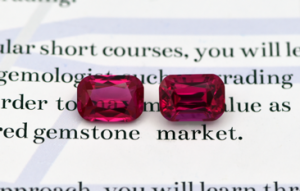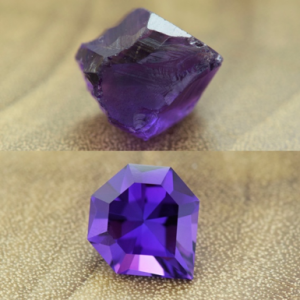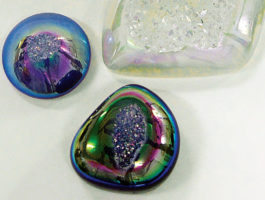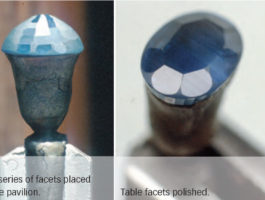AG Article: A Coloured Gemstone Buyer’s Guide to Cut Styles
Title: A Coloured Gemstone Buyer’s Guide to Cut Styles
Authors: Justin K Prim
Abstract: Once upon a time, buyers of coloured stones were solely focused on colour and size but in the 21st century, gemstone and jewellery customers are becoming more aware of the effect of the cut on coloured stones. Gemstone grading laboratories started issuing cut grades on diamonds in 2006 which caused the entire diamond industry to become more conscious of the cutting quality but in coloured stones this revolution has yet to come. Some laboratories are starting to issue cut grades on reports and a few laboratories have even offered the option of including the cutter’s name as an attempt to add value and provenance to a stone.
Each type of cutting style offers unique benefits to the gemstones whether that means enhanced colour, weight retention, or more sparkle. When the cutter picks up a piece of rough in order to plan the cut, they must make many complex decisions around how the stone will be cut, with respect to the rough stone’s original shape, colour, and weight. In an attempt to make gemstone and jewellery buyers more aware of the benefits of different types of cutting, this brief guide outlines the benefits and differences between some of the most popular cuts.

Figure 1. These stones are the same size and colour. Notice that the stone on the left has a pale coloured centre due to a ‘window’ that leaks light instead of reflecting it, allowing you to see through table to the text below. This detracts from the perceived colour and beauty of the stone. Compare this to the stone on the right which is well cut with correct angles and therefore reflects light throughout the whole stone thus presenting a more saturated colour. Photo courtesy of Justin K Prim


Figure 2. In these two examples, the cut design follows the rough. On the top, the rough tourmaline crystal was prismatic, so in order to respect the shape, a Step Cut rectangular baguette made the most sense. On the bottom, the rough amethyst started as an irregular shape that was made regular and symmetrical with a modern-style, tear drop shape with a Step Cut crown and a Brilliant cut pavilion. Photos courtesy of Victoria Raynaud and Justin K Prim
Read the full article in the June 2020 Issue of the Australian Gemmologist. Members of the Gemmological Associate receive copies of the journal free of charge – find out more about becoming a member today. Need a copy of the issue? Please contact the Editor.




